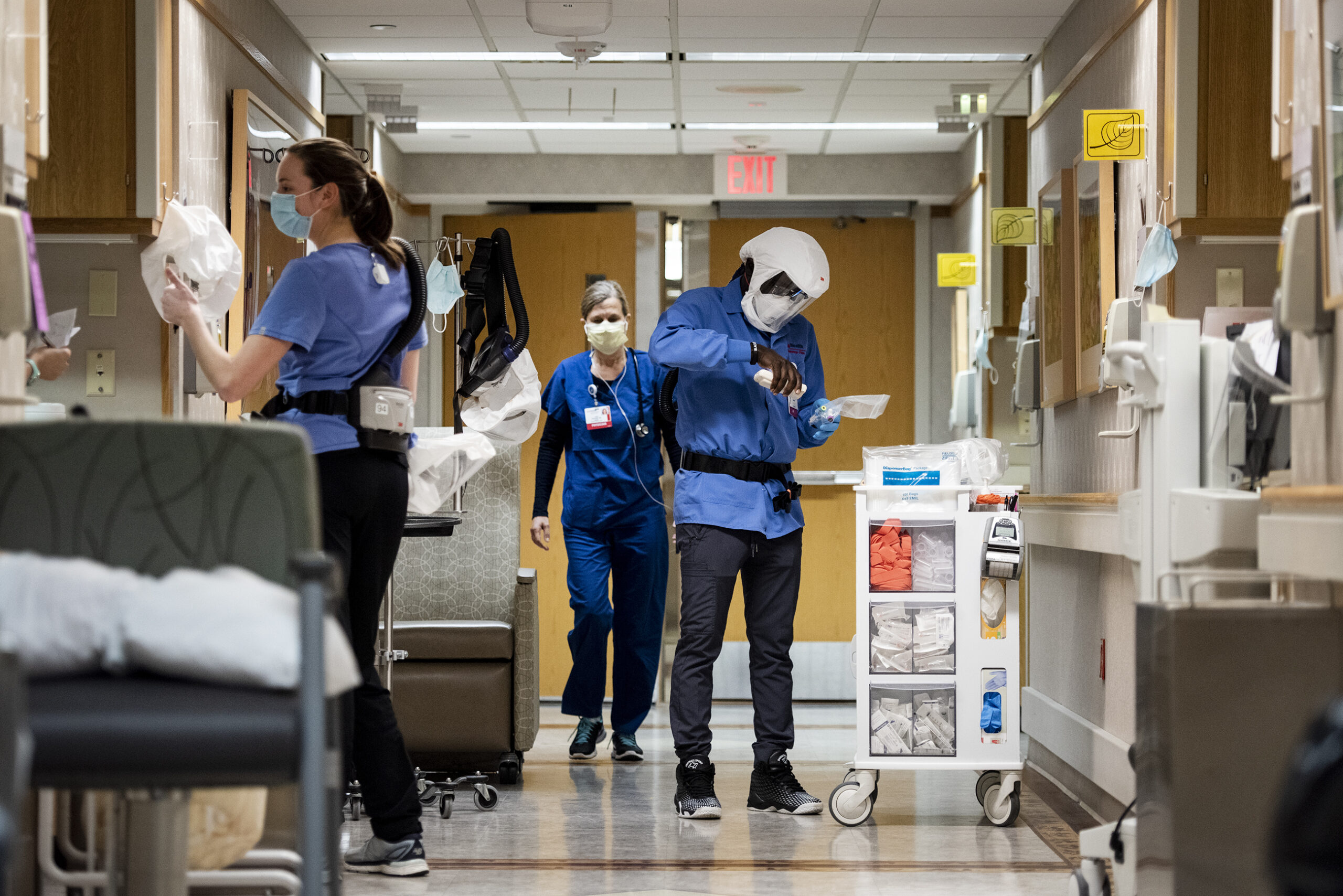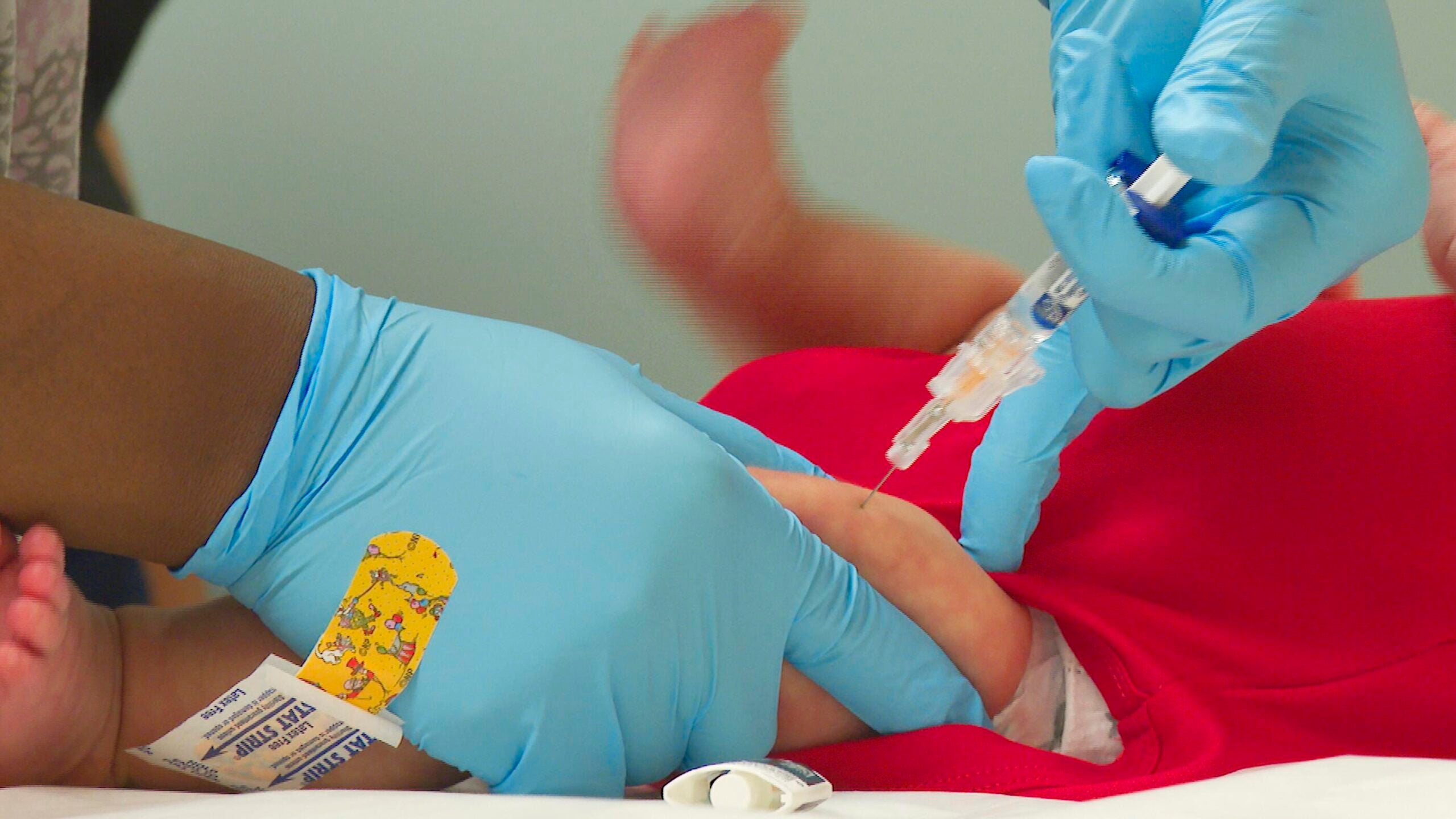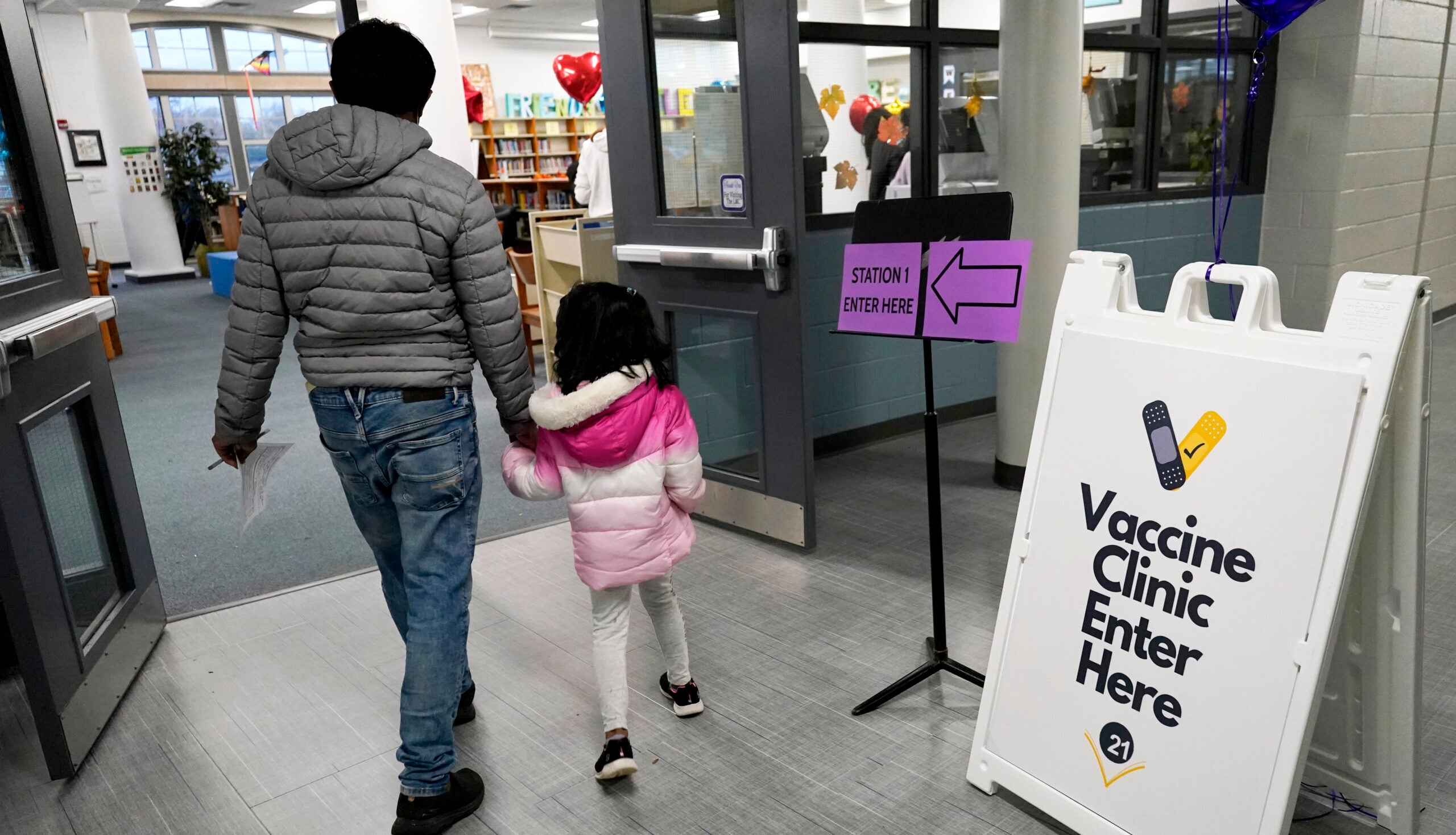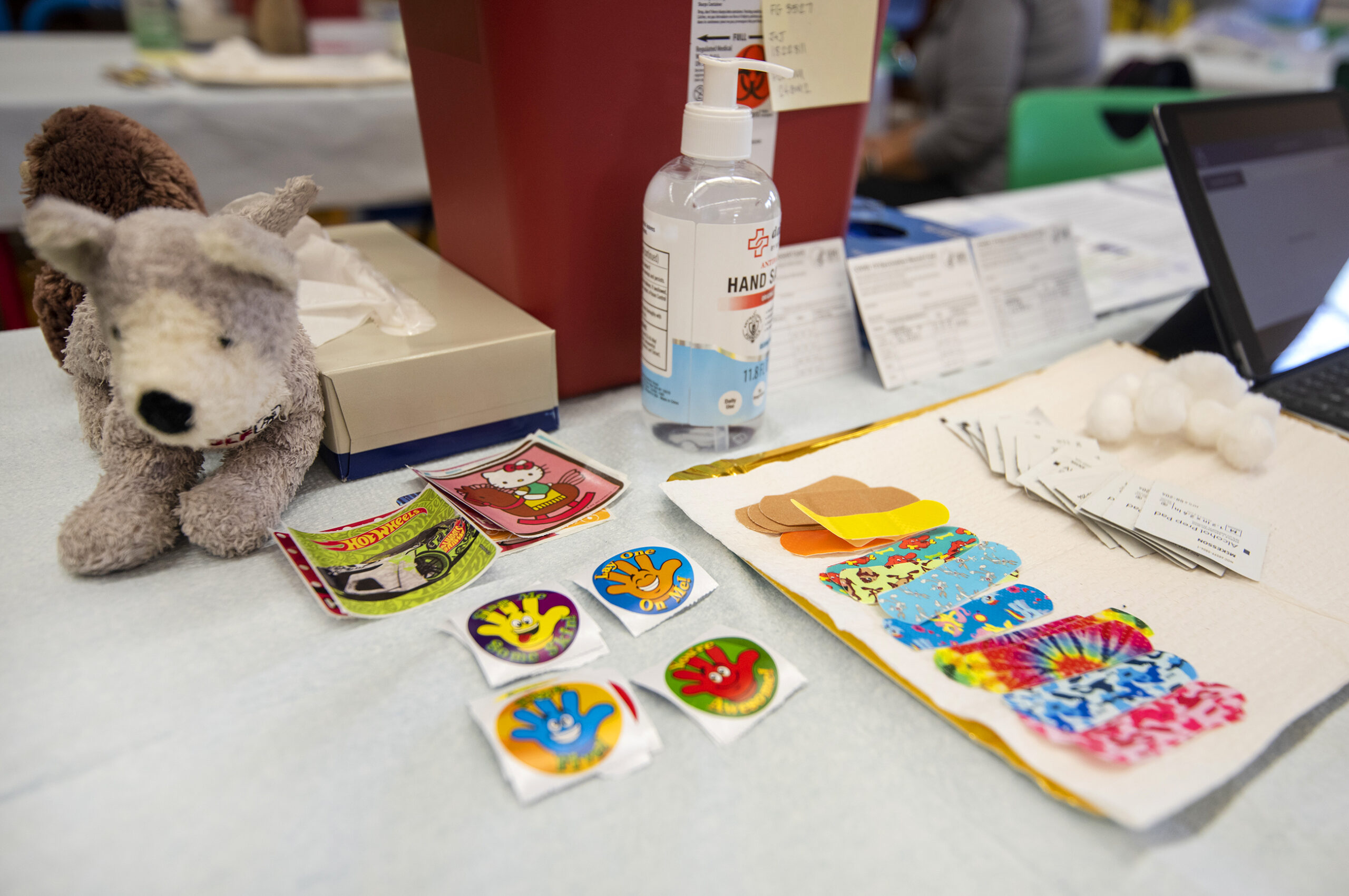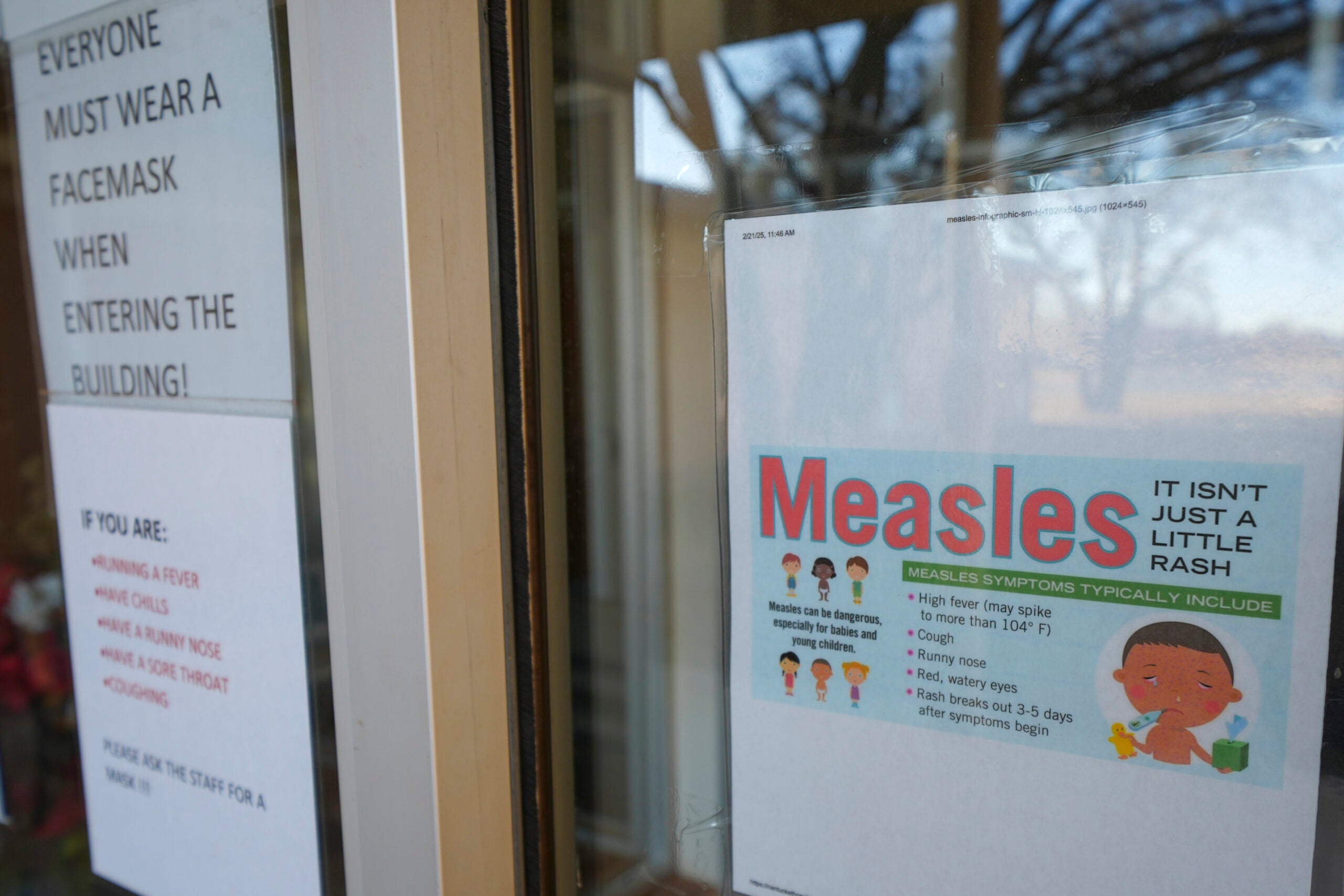For months, the graph of new coronavirus infections in Wisconsin pointed nearly straight up. In the last two weeks, though, the number of new cases confirmed daily has begun to decline.
The apparent decrease in new infections, as well as in test positivity rates, is a sign of fragile progress in the state’s battle against the virus. But public health experts say it’s much too soon to draw any firm conclusions about the state’s trends and it’s still too early for new infections generated by Thanksgiving gatherings to show up in state data.
News with a little more humanity
WPR’s “Wisconsin Today” newsletter keeps you connected to the state you love without feeling overwhelmed. No paywall. No agenda. No corporate filter.
Before Thanksgiving, Wisconsin was “at least leveling out, maybe trending down a little bit on some of the measures we look at,” said Dr. Jeffrey Pothof, the chief quality officer for UW Health. It would have been too soon to know if the state’s outbreak had begun to recede, but there was data suggesting that was possible.
The holiday itself is a confounding factor, though, Pothof said. Fewer people got tested around Thanksgiving. On Friday, the state reported just 1,300 new infections — the lowest daily total in more than two months, but also a clear outlier that had more to do with a dearth of testing on Thanksgiving Day than with the state of the pandemic in Wisconsin.
Still, the positive signs are not confined to a single day:
- On Monday, Wisconsin’s seven-day average for new infections was the lowest it had been in over a month at 4,209 cases per day.
- Monday’s test positivity rate was 12.3 percent — quite high by any public health standard (the World Health Organization has said positivity rates at 5 percent or lower indicate sufficient testing), but significantly below the peak of 17.9 percent on Nov. 11.
- There were 1,845 people hospitalized Monday, according to data from the Wisconsin Hospital Association, down from a Nov. 16 peak of 2,277. Hospitalizations are generally considered a lagging indicator because it can take several weeks for individuals to get sick enough to need to be hospitalized.
- After months among the worst-off states in the nation, as of Monday the New York Times’ COVID-19 data tracking tool had moved Wisconsin into a classification with states “where new cases are higher but going down.” In late October, the New York Times’ data showed eight of the nation’s 20 worst-hit metro areas were cities in Wisconsin. On Monday, 16th-ranked Beaver Dam was the only Wisconsin city that appeared on the list.
All of that progress could turn out to be short-lived. People who became infected when they traveled or spent time with others at Thanksgiving likely haven’t felt symptoms yet. But they soon will.
“More than likely, we’ll start seeing the early signs of what the heck Thanksgiving did to us later this week,” Pothof said. “If we start seeing spikes later in the week, early next week, that might be a bad sign that the holiday maybe wasn’t as tempered as we wanted it to be, and we’re starting to see another surge.”
That’s what Ajay Sethi is expecting. The epidemiologist at the University of Wisconsin-Madison School of Medicine and Public Health said the data in the next two weeks will likely tell us where Wisconsin will stand a month from now. He isn’t optimistic.
“There’s nothing in the next stretch of time, between Thanksgiving and New Year’s, to give me the expectation that we would be able to sustain this decrease that we’ve observed in the last couple of weeks,” Sethi said.
From very early in the pandemic, epidemiologists predicted that winter would be the most challenging season for states where cold weather moves many activities indoors, where the virus is spread more easily. And while many people have made real changes in their behavior — limiting social interactions, wearing masks in public, staying home when possible — both Pothof and Sethi said one lesson of the pandemic is that it’s extremely difficult to maintain control for long periods of time. Even states that effectively flattened the pandemic curve in the summer have seen recent resurgences.
Even if Wisconsin doesn’t see a new surge of cases, it would need to sustain recent declines for weeks more in order to return to infection levels seen in spring and summer. On June 20, the first day of summer, Wisconsin’s seven-day average of new infections was 288 per day — less than 7 percent of its average now.
At a media briefing before Thanksgiving, Dr. Ryan Westergaard, chief medical officer of Wisconsin’s Bureau of Communicable Diseases, said the state’s recent infection trends were “encouraging,” but quickly added that even some signs of progress do not mean the state has beaten back the virus.
“The level of transmission and the number of cases is critically high,” Westergaard said. “The easiest answer to the question, ‘Are we flattening the curve?’ is ‘No.’ … All communities have high disease activity.”
Wisconsin Public Radio, © Copyright 2026, Board of Regents of the University of Wisconsin System and Wisconsin Educational Communications Board.
